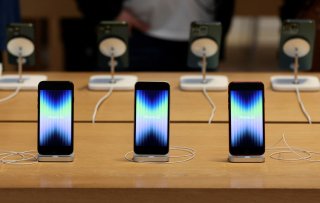Tech Trouble: Consumer Tech Sales Fall by $1 Billion
Despite the overall dip, smartphones are seen growing this year, to the tune of $2.175 billion.
In its U.S. Consumer Technology One-Year Industry Forecast, the Consumer Technology Association (CTA) is predicting that U.S. technology industry sales and shipments will drop -0.2 percent, or $1 billion, this year.
This follows 2021, in which sales surged 11.6 percent to $504 billion in revenue.
“In the face of inflation and a possible recession, savvy U.S. companies will stay competitive by transforming themselves to navigate a volatile market,” Gary Shapiro, president and CEO of CTA said in the announcement of the forecast. “Tough times spur innovation. Companies that show novel approaches to rethink supply chains, production, and their products and services will succeed at increasing productivity.”
Indeed, CTA, an industry association that both represents the consumer tech industry and owns and produces each year’s CES, sees its industry as part of the way out.
“Inflation and recession may contribute to the dip, but CTA believes the U.S. technology industry will play a crucial role in mitigating the economic effect of a recession through productivity gains spurred by innovation,” CTA said in its forecast announcement. “Research shows that increased productivity allows an economy to produce more for the same amount of labor.”
Despite the overall dip, smartphones are seen growing this year, to the tune of $2.175 billion, as 5G models become more popular. By next year, CTA predicted, 84 percent of smartphones will be 5G.
Gaming revenue also rose to $51.7 billion this year and is projected to reach $52.4 billion next year, thanks in part to “Pent-up demand for next generation consoles.”
The smart home is also a growth category, with hardware revenue for such devices seining a 3 percent increase in 2022.
“As energy costs continue to rise, energy-efficient devices offer consumers cost-saving solutions for lighting, thermostats, and smart outlets,” CTA said.
In addition, 4 percent growth is seen for the health tech category.
“The pandemic began a long-term trend toward the greater adoption of health technology by consumers. Meanwhile, smartwatches and fitness trackers feature more capabilities and longer battery life.”
Despite those bright spots, CTA continues to see trouble from supply chain bottlenecks that aren’t expected to go away anytime soon.
In May, a CTA survey found that 58 percent of respondents saw semiconductor shortages lasting a year or longer, while 50 percent see shipping and logistics disruptions lasting a year or longer.
“Policies encouraging high-skilled immigration and limiting frivolous lawsuits will strengthen a technology industry that is ready to drive economic recovery,” CTA said.
The CTA forecast looks at a variety of product categories, including “Audio, Video, Information Technology, Communications, Video Gaming, Accessories, Media, Smart Home and Wearables.”
Stephen Silver, a technology writer for The National Interest, is a journalist, essayist and film critic, who is also a contributor to The Philadelphia Inquirer, Philly Voice, Philadelphia Weekly, the Jewish Telegraphic Agency, Living Life Fearless, Backstage magazine, Broad Street Review and Splice Today. The co-founder of the Philadelphia Film Critics Circle, Stephen lives in suburban Philadelphia with his wife and two sons. Follow him on Twitter at @StephenSilver.
Image: Reuters.

